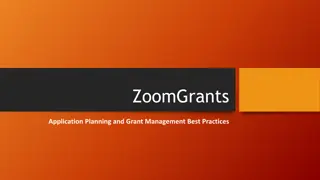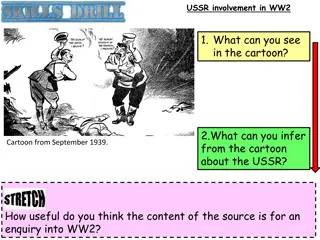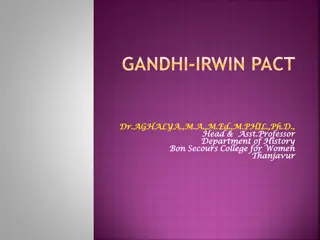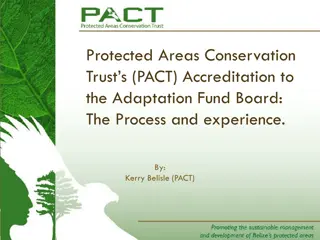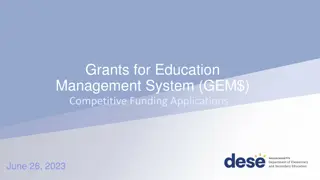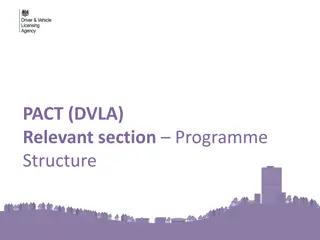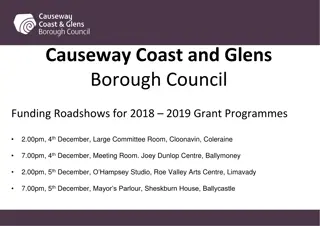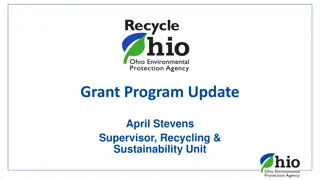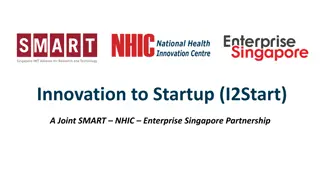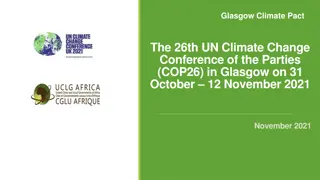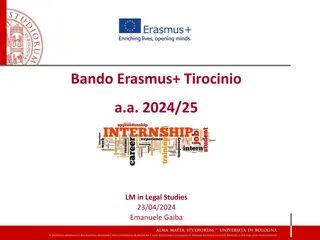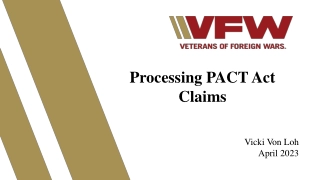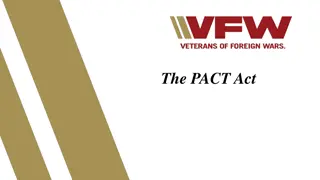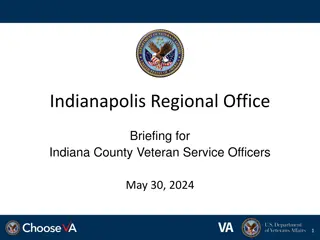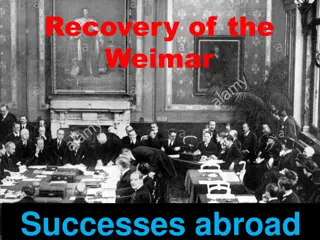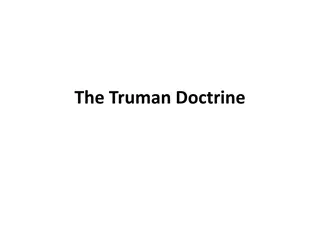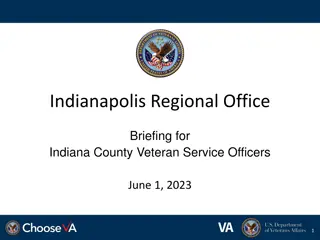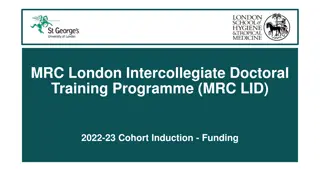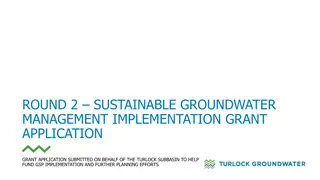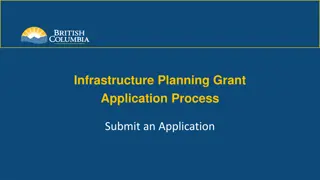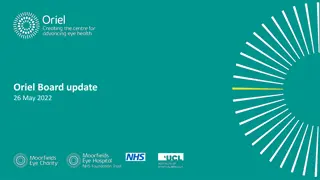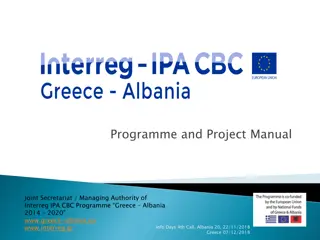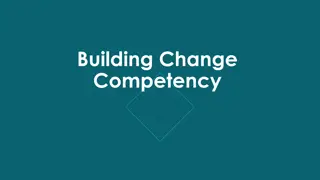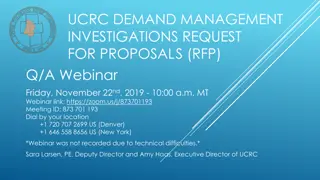UK PACT Programme Theory of Change - Grant Funding Application
"This grant funding application guide outlines the process and instructions for applicants to develop their project Theory of Change aligned with the UK PACT Programme. It covers key definitions, project outputs, GESI contributions, MEL process, and stakeholder engagement requirements. Successful applicants will receive support for progress indicators, results monitoring, and reporting. Visit www.ukpact.co.uk for more information."
Uploaded on Sep 27, 2024 | 0 Views
Download Presentation

Please find below an Image/Link to download the presentation.
The content on the website is provided AS IS for your information and personal use only. It may not be sold, licensed, or shared on other websites without obtaining consent from the author. Download presentation by click this link. If you encounter any issues during the download, it is possible that the publisher has removed the file from their server.
E N D
Presentation Transcript
Project Theory of Change Project Theory of Change Please complete this as part of your application for grant funding August 2023
1 2 3 4 UK PACT Country Programmes MEL process and instructions for applicants UK PACT Programme Theory of Change & Key Definitions Your Project Theory of Change Your Project Outputs & GESI Contributions
MEL Process & Instructions for Applicants
MEL Process & Instructions for Applicants MEL Process & Instructions for Applicants Your MEL journey with UK PACT Country Programmes Develop your project Theory of Change (aligned with the UK PACT Programme Theory of Change) and submit in your Application If awarded, your UK PACT Country Team will support you in developing the following which will be included in your Grant Agreement: a) Progress indicators for your project, including all your project outputs and any outcomes expected during the contract period, b) A plan for results monitoring and reporting, including means for verification of each progress indicator and, if verification of results includes other stakeholders, a plan for stakeholder engagement. During implementation, you will need to report quarterly on all project results to your Country Team. For more information, visit www.ukpact.co.uk
UK PACT Programme ToC & Key Definitions
Key Definitions (please refer to these when completing the following Key Definitions (please refer to these when completing the following slides) slides) Inputs & Activities = things that will be used to implement the project (e.g., trainings, research, technical expertise, stakeholder engagement), and actions you must complete to achieve project success, usually consisting of tasks and subtasks that all contribute to the activity's completion. These are the activities that must be listed in your Project Workplan. Outputs = the deliverable or product achieved as a result of the inputs. These are within the direct control of an intervention and are normally provided to the project s key counterparts or other project stakeholders. Outputs are the basis from which the desired change will occur, e.g., trainings, reports/documents, key meetings/events, tools, etc. All outputs on UK PACT projects must categorised using one of the four output types explained on the next slide. Intermediate Outcomes = an interim indication of initial uptake by programme stakeholders. The logic of the intermediate outcome is that programme-supported outputs should be adopted or taken up by the stakeholders that work most directly with the programme. These stakeholders are then responsible for using or implementing those outputs to achieve their intended purpose. Outcomes = are achieved when an output has been firmly adopted, implemented and has shown to result in a significant change in behaviour. If the programme s adopted outputs are effectively implemented by its counterpart stakeholders, we articulate this outcome as enhanced, sustained, and inclusive action on emissions reduction. GESI Contribution = UK PACT s ambitions for gender equity and social inclusion (GESI) are to go beyond minimum compliance. Project outputs must do no harm, should empower gender equality and social inclusion, and are strongly encouraged to support GESI transformation wherever possible. For more information, visit www.ukpact.co.uk
UK PACT Output Types UK PACT Output Types To ensure your project is aligned with the UK PACT programme Theory of Change, your outputs must be categorised into one of the the programme output types below Output type Description 1. Skills enhanced Addressing the capacity constraints amongst governments and private sector entities, including increasing key individuals (decision makers, senior managers, etc.) institutional capacities, through events and activities such as workshops, trainings and seminars. 2. Recommendations proposed 2.1 For relevant policies, legislation, and regulation Laws, rules or regulations created to reduce, or that can contribute to reducing, carbon emissions in the public sector, e.g., national plans, strategies, road maps, etc. 2.2 Other relevant actions to reduce GHG emissions Improvements to the usual practices of stakeholders to reduce GHG emissions in the private sector, such as supporting the use of low-carbon technologies, and creating guidelines and incentives, standards, voluntary programmes and pledges. 2.3 Applications/tools to support accessing funds for reducing emissions Instruments that enable access to new or existing non-programme (i.e., externally sourced) funds, that have not yet been accessed or would have been harder to gain access otherwise. Extra funds proposed for the implementation of recommendations are also included. 3. Knowledge and communications products developed and disseminated Addressing the awareness constraints amongst key stakeholder and actors that hinder climate action 3.1 Knowledge products Research papers, reports, and training course material (if applicable beyond a single use) 3.2 Communication products include presentations, press releases, and leaflets designed to communicate critical climate-related content to particular audiences for specific programme needs. These products do not generate new knowledge, but are used to share, spread, or disseminate existing knowledge to reach specific audiences or raise awareness (they may be reformatted versions of original knowledge products). 4 Network links established/strengthened Networks are partnerships established through networking initiatives; strengthened refer to partnerships that are already in existence but are reinvigorated around specific activities, actions, or plans to support reduced emissions. Effective partnerships are key to unlocking solutions for reducing climate change and its impacts, these outputs aim to foster these networks. For more information, visit www.ukpact.co.uk
Your Project Theory of Change
Instructions for completing your Theory of Instructions for completing your Theory of Change Change 1. 2. Review the example of a UK PACT project Theory of Change provided on slide 11. Complete the template on slide 12 for your project, adding or deleting boxes where necessary and providing detailed titles for each output, intermediate outcome, outcome and impact. Start with your planned outputs and work forwards. Your outputs must be categorised into the programme output types on slide 8. We have provided an example of each output type on slide 11 (with numbering corresponding to the output types on slide 8), however you do not need to have every type of output in your Project Theory of Change on slide 12. Please provide a number reference to indicate which type each output is. For example, if you have 2 trainings (output type 1), then 2 of your outputs will have O1 (Output 1) referenced beside the title. Link boxes horizontally with arrows to illustrate the chain of results from output to outcome. Arrows have been provided to illustrate how they should be used. Multiple outputs may contribute towards the same intermediate outcome, and multiple intermediate outcomes may contribute towards the same outcome. If you need more space, you may copy the template to an additional slide, however in this case we are looking for quality not quantity. Once you have completed your Theory of Change on slide 12, please complete the output forms in the Full Proposal Template. There is a different form for each output type. Please copy as many of each form that you need so that you complete one form for each of your project outputs. 3. 4. 5. 6. 7. 8. For more information, visit www.ukpact.co.uk
Theory of Change Example Impact Outcomes Outputs Intermediate Outcomes Reduced emissions supported by UK PACT O1.Training workshops on just energy transitions delivered to senior government officials Senior government officials use the knowledge gained from training and briefs in their decision-making Improved government capacity to implement a just transition O2.1. Just Energy Transition policy briefs presented to key national ministries National ministries adopt public policy recommendations for a just energy transition Transformational change in countries supported by UK PACT National government invests in just transition recommendations and integrates them in their 5- year strategy O2.2. Recommendations report on private sector opportunities in nature- based solutions (NBS) Private sector stakeholders engage with the recommended renewable energy solutions Gender equality and social inclusion empowered and enhanced, with reduced impacts of climate change on the vulnerable Private sector funds deployed and increased investment in renewable energy initiatives O2.3. Privatesector financing mechanism developed to support the access of funds for renewable energy solutions O3.1. Research paper on the successful application of just energy transition principles in several different contexts Private sector stakeholders adopt the use of the mechanism to access finance for renewable energy solutions Key stakeholders endorse the information from the research paper and conference presentation Replication of just energy transition principles in other contexts O3.2. Presentation and press release on key research findings The Just Energy Transition Working Group commit to undertaking just transition projects/activities together Just Energy Transition Working Group projects receive funding for implementation O4. Establishment of a Just Energy Transition Working Group with key project For more information, visit www.ukpact.co.uk stakeholders
Theory of Change template for completion Impact Outcomes Outputs Intermediate Outcomes Reduced emissions supported by UK PACT TYPE - Description TYPE - Description Transformational change in countries supported by UK PACT TYPE - Description Gender equality and social inclusion empowered and enhanced, with reduced impacts of climate change on the vulnerable TYPE - Description TYPE - Description TYPE - Description TYPE - Description For more information, visit www.ukpact.co.uk


